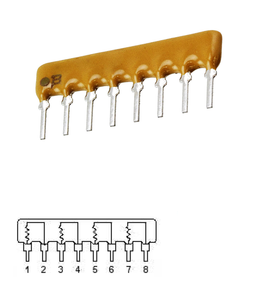SIP stands for Session Initiation Protocol. It is an application-layer control protocol which has been developed and designed within the IETF. The protocol has been designed with easy implementation, good scalability, and flexibility in mind.
Buy Grandstream GXP1782 8 Line IP Phone, 4 SIP Accounts, 200x80 Pixel Backlit Display, HD Audio, Dual-Switched Gigabit Port, Powerable Via POE. Powerful Mid-range HD IP Phone GXP1782 The GXP1782 is a powerful mid-range IP phone with advanced telephony features. This mid-range IP phone comes equipped with 8 lines, 4 SIP accounts, 8 dual-color line keys and 4 XML programmable.

- AS-SIP provides multiple endpoint interfaces on the Unified Communications Manager. Generic Desktop Video Endpoint —This SIP device supports video, security, configurable trust, and Cisco extensions. This device supports 8 lines; the maximum number of calls and busy trigger for each line is 4 and 2, respectively.
- RFC 3261 SIP: Session Initiation Protocol June 2002 failure responses that solicit an amendment to a request (for example, a challenge for authentication), these retried requests are not considered new requests, and therefore do not need new Call-ID header fields; see Section 8.1.3.5.
- SIP 'N' DIP CAFE, St Marys, New South Wales. 797 likes 4 talking about this.
- Cisco Unified IP Phone 7960G and 7940G Administration Guide for Release 8.0 (SIP) OL-7890-01 Appendix B SIP Call Flows Call Flow Scenarios for Successful Calls Figure B-2 Successful Call Setup and Hold IP SIP IP Phone User B 3. Call Proceeding 6. Setup User A PBX A GW1 IP Network 4.
The specification is available in form of several RFCs, the most important one is RFC3261 which contains the core protocol specification. The protocol is used for creating, modifying, and terminating sessions with one or more participants. By sessions we understand a set of senders and receivers that communicate and the state kept in those senders and receivers during the communication. Examples of a session can include Internet telephone calls, distribution of multimedia, multimedia conferences, distributed computer games, etc.
SIP is not the only protocol that the communicating devices will need. It is not meant to be a general purpose protocol. Purpose of SIP is just to make the communication possible, the communication itself must be achieved by another means (and possibly another protocol). Two protocols that are most often used along with SIP are RTP and SDP. RTP protocol is used to carry the real-time multimedia data (including audio, video, and text), the protocol makes it possible to encode and split the data into packets and transport such packets over the Internet. Another important protocol is SDP, which is used to describe and encode capabilities of session participants. Such a description is then used to negotiate the characteristics of the session so that all the devices can participate (that includes, for example, negotiation of codecs used to encode media so all the participants will be able to decode it, negotiation of transport protocol used and so on).
SIP has been designed in conformance with the Internet model. Mac dvdripper pro 6 0 1 download free. It is an end-to-end oriented signaling protocol which means, that all the logic is stored in end devices (except routing of SIP messages). State is also stored in end-devices only, there is no single point of failure and networks designed this way scale well. The price that we have to pay for the distributiveness and scalability is higher message overhead, caused by the messages being sent end-to-end.
Sip 1 0 8 0
It is worth of mentioning that the end-to-end concept of SIP is a significant divergence from regular PSTN (Public Switched Telephone Network) where all the state and logic is stored in the network and end devices (telephones) are very primitive. Aim of SIP is to provide the same functionality that the traditional PSTNs have, but the end-to-end design makes SIP networks much more powerful and open to the implementation of new services that can be hardly implemented in the traditional PSTNs.
Sp 1088
SIP is based on HTTP protocol. The HTTP protocol inherited format of message headers from RFC822. HTTP is probably the most successful and widely used protocol in the Internet. It tries to combine the best of the both. In fact, HTTP can be classified as a signaling protocol too, because user agents use the protocol to tell a HTTP server in which documents they are interested in. SIP is used to carry the description of session parameters, the description is encoded into a document using SDP. Both protocols (HTTP and SIP) have inherited encoding of message headers from RFC822. The encoding has proven to be robust and flexible over the years.

